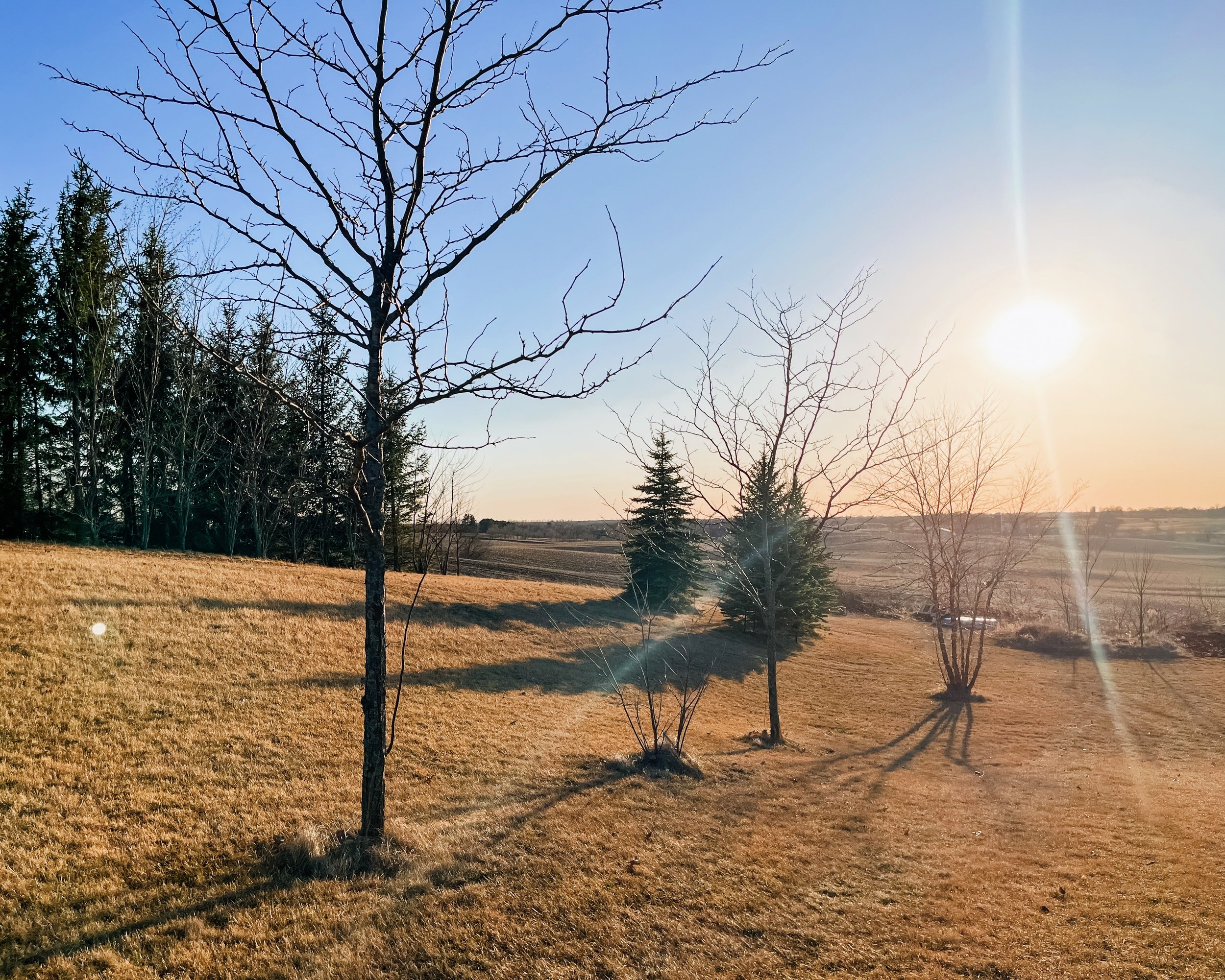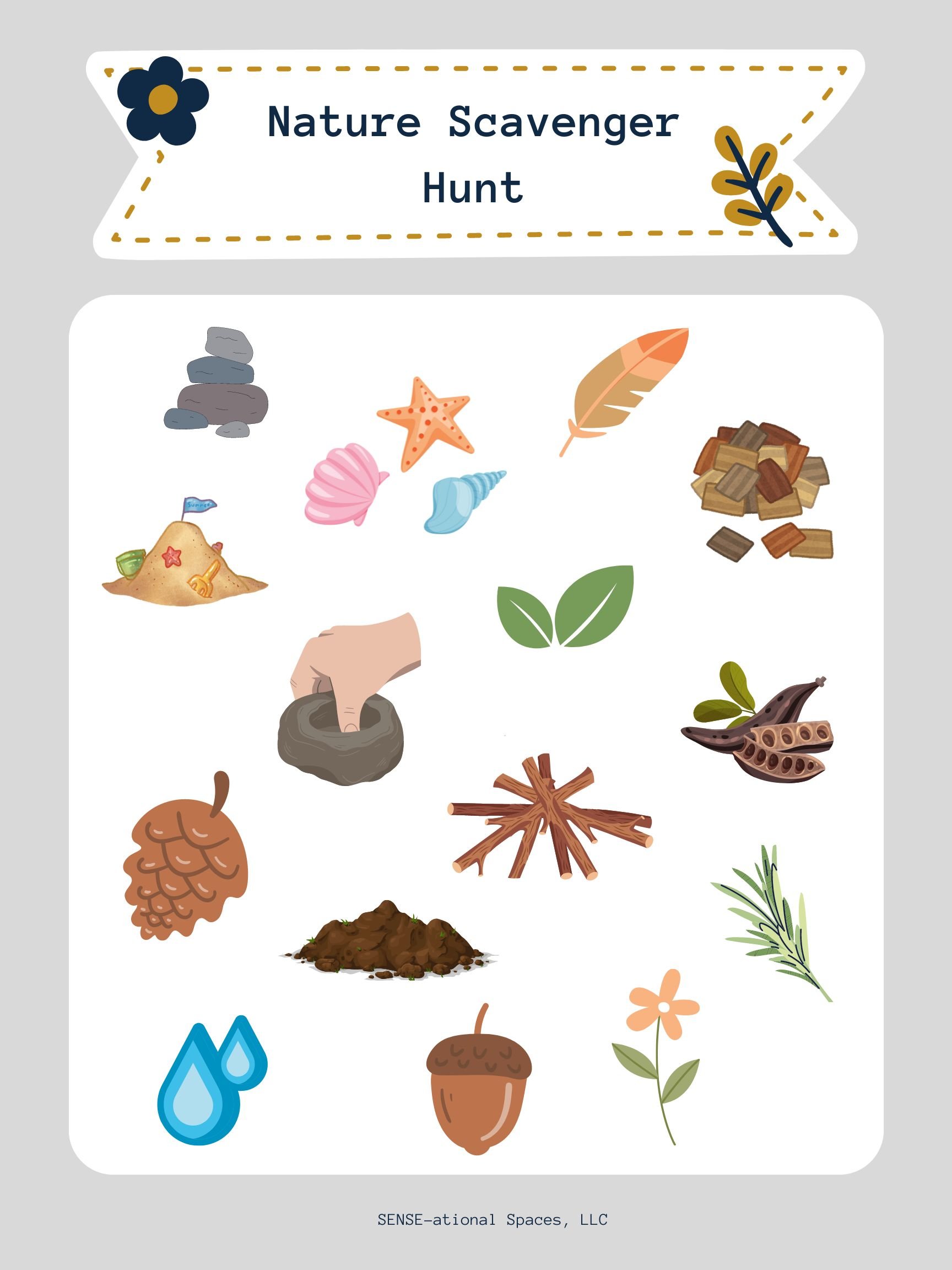How To Create a Nature Sensory Bin
What is a Sensory Bin?
A sensory bin is an interactive, hands-on activity that promotes sensory play (Busy Toddler, 2023). Sensory play is important for children’s development, as it engages the senses and helps build neural connections in the brain (Cleveland Clinic, 2022).
Sensory bins promote unstructured free play and provide a safe opportunity for sensory exploration (NAPA Team, 2022). Sensory bins can be tailored to meet the sensory needs of all children, as the items selected are meant to stimulate the senses in a unique way (Busy Toddler, 2023; NAPA Team, 2022).
What are the Benefits?
Playing in sensory bins can have many beneficial impacts on children’s development, including:
(Cleveland Clinic, 2022; NAPA Team, 2022; Salus University Health, 2021)
Check out our blog post “Science Behind the Fun” for more in-depth information on the benefits of sensory bins!
How To Create a Nature Sensory Bin
Step One: Obtain a storage bin (preferably with a lid for easy storage!)
Step Two: Collect items from outside
Consider items of varying sizes, shapes, colors, textures, and weights to provide diverse tactile and visual sensory input
Add items that make a variety of sounds when touched and manipulated for increased auditory input, such as crunchy leaves or rattling seed pods
Use plants that smell for increased olfactory sensory input, including pine needles, lavender, mint, or flowers
Providing a set of tools can promote fine motor skill enhancement, or encourage children with an aversion to touching various textures to play in the sensory bin
Step Three: Have fun!
Target visual perceptual skills and encourage outdoor sensory exploration! Include your child in building the nature sensory bin by using this scavenger hunt.
If you are unable to access a variety of items outdoors or want to add more, consider these items:
Faux moss
Dried plants, flowers, or leaves
Faux flowers
Pine cones
Kinetic play sand
River rocks
Rock and gem set
How To Use Your Nature Sensory Bin
Sensory Play and Exploration
Encourage your child to participate in creating the nature sensory bin for increased sensory exploration!
Learning Activities
Nature sensory bins can provide an opportunity to teach children about rock formation, the water cycle, composting, photosynthesis, pollination, and more!
Sensory bins can also help children practice counting, color identification, sorting by size, and more (Cleveland Clinic, 2022; Salus University Health, 2021)
Use a scavenger hunt to make learning fun! Task your child to find all of the green items, sort the items by largest to smallest, or find a soft item
Emotional Regulation
If your child becomes upset or experiences aversion to any of the sensory bin items, help your child put words to what they are experiencing (i.e., fuzzy, rough, noisy) - this can help your child understand what sensory experiences they prefer and which ones they dislike
Transition to Outdoor Sensory Exploration
If your child enjoys playing in their nature sensory bin, transition this play to the outdoors! Encourage sensory exploration in the outdoors - both unstructured or structured (i.e., a scavenger hunt or sensory gardening)!
Are you interested in creating more sensory bins? Check out our blog here for more ideas!
References
Busy Toddler. (2023, January 22). What is a sensory bin? https://busytoddler.com/what-is-a-sensory-bin/
Cleveland Clinic. (2022, March 17). What is sensory play? The benefits for your child and sensory play ideas. https://health.clevelandclinic.org/benefits-of-sensory-play-ideas
NAPA Team. (2022, October 15). Sensory bins for toddlers: Our favorite ideas and items. NAPA Center. https://napacenter.org/sensory-items/
Salus University Health. (2021, March 3). Six developmental benefits of sensory bins. https://www.salusuhealth.com/news/2021/03/six-developmental-benefits-of-sensory-bins.html





